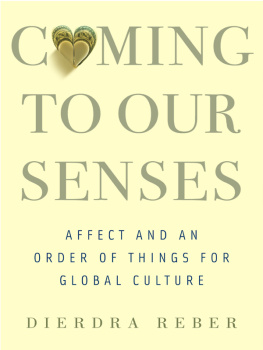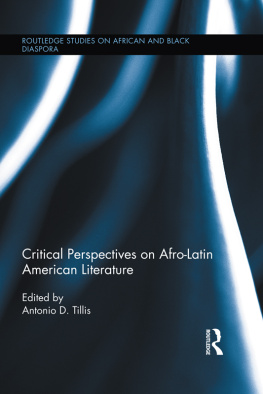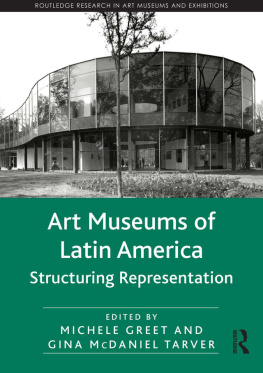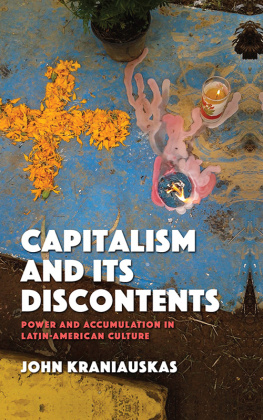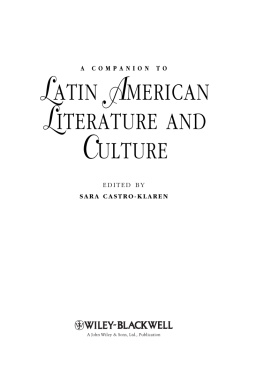COMING TO OUR SENSES
Coming to Our Senses
AFFECT AND AN ORDER OF THINGS FOR GLOBAL CULTURE
DIERDRA REBER
COLUMBIA UNIVERSITY PRESS NEW YORK
COLUMBIA UNIVERSITY PRESS
Publishers Since 1893
NEW YORK CHICHESTER, WEST SUSSEX
cup.columbia.edu
Copyright 2016 Columbia University Press
All rights reserved
E-ISBN 978-0-231-54090-2
Library of Congress Cataloging-in-Publication Data
Reber, Dierdra
Coming to our senses : affect and an order of things for global culture / Dierdra Reber.
pages cm.
Includes bibliographical references and index.
ISBN 978-0-231-17052-9 (cloth : alk. paper) ISBN 978-0-231-54090-2 (e-book)
1. AestheticsPsychological aspects 2. Affect (Psychology) 3. Capitalism. 4. GlobalizationReligious aspectsChristianity. I. Title.
BH301.P78R43 2015
306dc23
2015017754
A Columbia University Press E-book.
CUP would be pleased to hear about your reading experience with this e-book at .
COVER DESIGN: Christopher King
References to websites (URLs) were accurate at the time of writing. Neither the author nor Columbia University Press is responsible for URLs that may have expired or changed since the manuscript was prepared.
For my grandmother
who gave me a room of my own
and my daughters
who fill it with light
Contents
In my childhood, I had the persistent impression of having been born into a cultural aftermath. Everything had already happened, and I had missed it all: wars of indiscernible quantity, presidents and cultural heroes assassinated, the civil rights movement, Woodstock, Vietnam. I intuited that the events that marked my childhood were of an entirely different nature: the opening of the Golden Triangle Mall in Denton, Texas, where I spent my earliest years, and its eventual upstaging by Walmart, the Pepsi Challenge, the John Williams Star Wars theme virtually looped on the radio, and, more important for me, Star Wars action figures, Cookie Crisp cereal (which my grandmother unfeelingly obliged me to mix with All-Bran), the Hispanic Hispanica Barbie doll (whose redundancy is still baffling), the Sony Walkman, the Commodore 64, Atari, Apple computers, Rubiks Cubes, Pac-Man, Ms. Pac-Man, Super Mario Brothers, Michael Jackson, Michael Jordon, Air Jordans, Cabbage Patch Kids, jelly beans (because Ronald Reagan loved them), Jordache jeans, neon T-shirts and socks, crocodiles and polo players, asymmetrical haircuts, Madonna, the Beastie Boys, and the division of the school cafeteria into first, second, and third world dining levels in support of Oxfam. Even the fall of the Berlin Wall is archived thus in this history of life as a history of consumption: what I most clearly recall about that monumental event is the news that pieces of the wall were being sold as souvenirs.
In my minds eye, a persistent juxtaposition serves as a conceptual distillation of the cultural juncture into which I perceived myself to have been born: on the one hand, grainy and chaotic images on the evening news of men running with guns in a faraway arid-looking place; on the other, people from around the world singing in candlelit unity about such delightful and friendly things as apple trees, honey bees, buying the world a Coke, and keeping it company. The men with guns, I thought, should really learn this song.
As an adult, I am still trying to make sense of the enduring power of this television commercial, which I know now must have been the 1977 Coca-Cola Candles ad, a Christmas-themed remake of the original 1971 Hilltop ad whose jingle was so instantly and intensely popular that Coca-Colas advertising team at McCann Erickson had it recorded by not one but two pop groups, the Hillside Singers and the New Seekers, whose versions of the same song moved to the top of the U.S. pop charts with the title Id Like to Teach the World to Sing (In Perfect Harmony). McCann Erickson Hilltop art director Harvey Gabor recalls that the release of the commercial drew over one hundred thousand fan letters for Coca-Cola (Google Project Re: Brief); one Huffington Post blogger calls Hilltop the most popular and iconic television ad ever created (Amato).
The key content common to both the original 1971 and Christmas 1977 commercials is the extended camera pan, first in close-up, then from an aerial view, of an eclectic grouping of people of diverse ethnicity and fashion of dress, in an apparent microcosm of humanity the world over. Indeed, Gabor is credited with the guiding foundational vision for the ad of wanting to create what he called the First United Chorus of the World (Ryan). In both commercials, these singers embody harmony by standing at elbows distance of one another, with relaxed, peaceful, and smiling expressions as they sing (in truth, lip-sync) lyrics about harmony, love, and company. In the Hilltop ad the singers all raise an iconic glass Coca-Cola bottle in one hand, in the Candles ad, a lit white candle. In the Hilltop ad, the closing aerial shot reveals this group on a bucolic Italian hillside in a triangular shape that connotes progressive growth from the singular point person at its head to the increasingly broad rows that fan out expansively behind. In the Candles ad, the closing aerial shot reveals the group on an equally pastoral hillside seated together, again in a triangle, this time forming the classic shape of a Christmas tree, their swaying candles making it seem like a single living being.
Coca-Cola and McCann Erickson were intentionally trying to pioneer a new messagethe lyrics in the Hilltop ad suggest that the commercial is seeking to embody what the world wants now, though it leaves the contrapuntal then unspoken; what it is that the commercial sees itself as breaking with is not spelled out for the viewer. For me as a child, it seemed that this ad broke with segregation, violence, hierarchy, and vertical authority. Of course, I couldnt articulate all this at the time, but I could sense that Candles represented the antithesis of the televised warfare I was also seeing. It wasnt therefore as much a break from history per se that Candles was stagingfor I was seeing the men with guns at the same point in time that I was seeing these people singing togetheras it was staging a break in cultural modality of thought. In other words, an epistemological break, which this book proposes to trace.
Candles, and Hilltop before it, proposed absolute heterogeneity and absolute unity in simultaneity. Each singer was clearly meant to represent a discrete ethnic profile, yet the togetherness of the group was as important as its members individualitythese became perfectly interchangeable in the sense that any given individual could represent the whole. In this sense, the representation was perfectly democratic, for each face was understood to be equally important and valuable as any other; in this vision the intention was to signal an emphasis on the absolute equality of the members of this group. (Certainly, a face-by-face analysis of each ad might reveal imbalances favoring Caucasian faces or other asymmetries of ethnic or regional representation, but in general terms the overarching denotative function of the ad seems clearly to have been to represent the purest possible multiculturalism.)
It is significant that the singers in both ads form a large enough group of people that they become too many to count easily with the eye; they are so many that the only distinguishing characteristic of them all, from the distance of the final take, is their common humanity. In the Candles ad, even this much is not visible in the closing image, where the members of the group become, simply, moving points of light. In each case, the togetherness and unity of the group is represented as a single unified body; the concluding Candles shot of the living Christmas tree takes the representation of this organicity one conceptual step further than Hilltopif in Hilltop the growth of the group is suggested by its positioning into the frame of an ever expanding shape, in Candles the group is organized into a shape that represents organic life itself in the form of an arborescent body.

